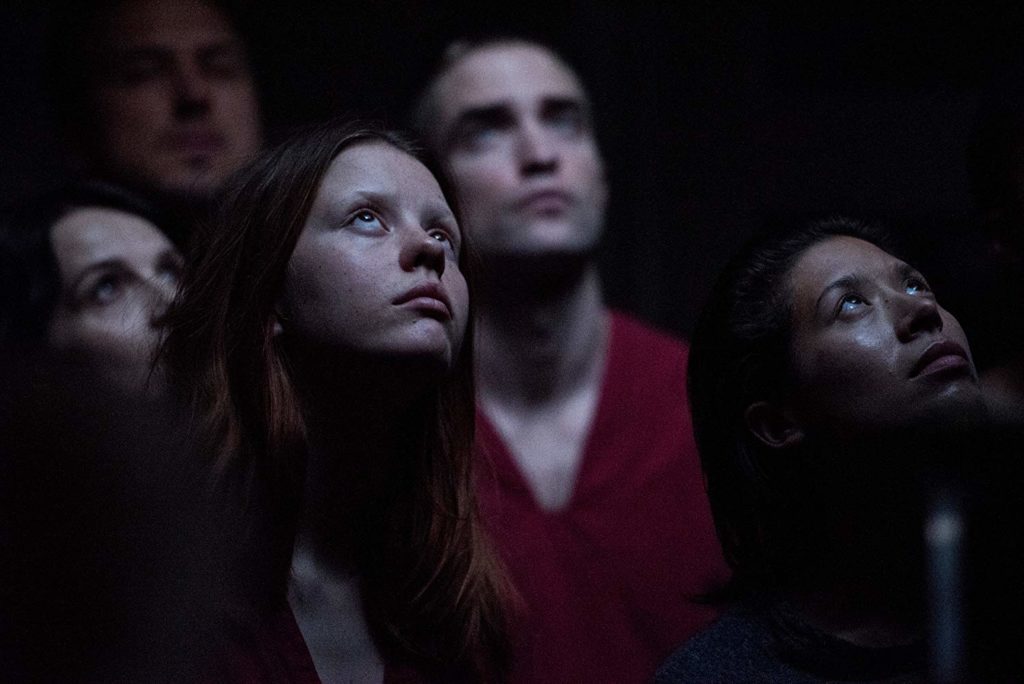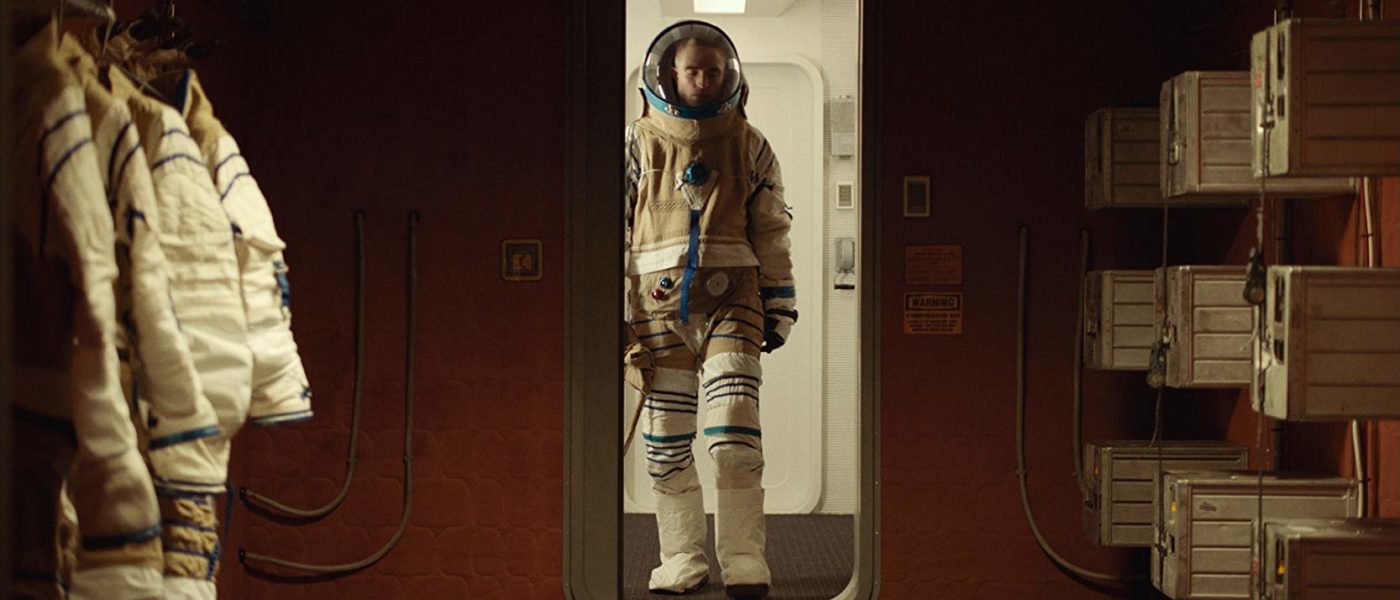Robert Pattinson is the Ultimate Black Hole son in Claire Denis’ Sci-Fi Head Trip.
DIRECTED BY CLAIRE DENIS/2019 (U.S. Theatrical Release)
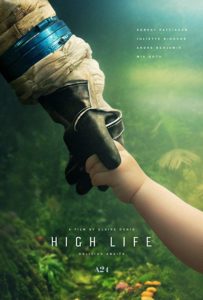
“If I told you what it takes to reach the highest high, you’d laugh and tell me nothing’s that simple.”
So sang The Who in 1968, part of a key lyric in their landmark rock opera, Tommy. The song, ironically titled in this context, is “I’m Free”.
Elsewhere, it’s been said that in order to truly appreciate the highest highs, one must venture through the lowest lows. But what if the perceived highs turn out to be the lows? For the characters in filmmaker Claire Denis’s bold new film, High Life, this is exactly the case. Continuous sexual release, in a sense, fuels this pioneering voyage to the edge of the known universe. But there is nothing at all sexy about one second of this film. As sure as the end credits will roll, these people are doomed pawns of some barely glimpsed desperate judicial system of the semi-near future. How big of a difference can there be between high and lows for this lot of convicts, reassigned as astro-guinea pigs?
Part claustrophobic horror, part speculative science fiction, part intellectual mood piece, Denis’ vessel-bound film wears its art-house nihilism and grunginess with uncompromising pride.
The farther the crew of this singular suicide squad of prisoners-turned-explorers gets from Earth, the more that procreation becomes an obsession for the ship’s resident authority figure, the labcoated madwoman, Dr. Dibs. Dibs is played menacingly by the fearless yet pulsating Juliette Binoche, who’s antagonist performance here counteracts the titular edict of her previous Denis collaboration, the recent Let the Sunshine In. She couldn’t let any sunshine in if she wanted to… and for the record, there’s zero indication that Dibs would ever want to.
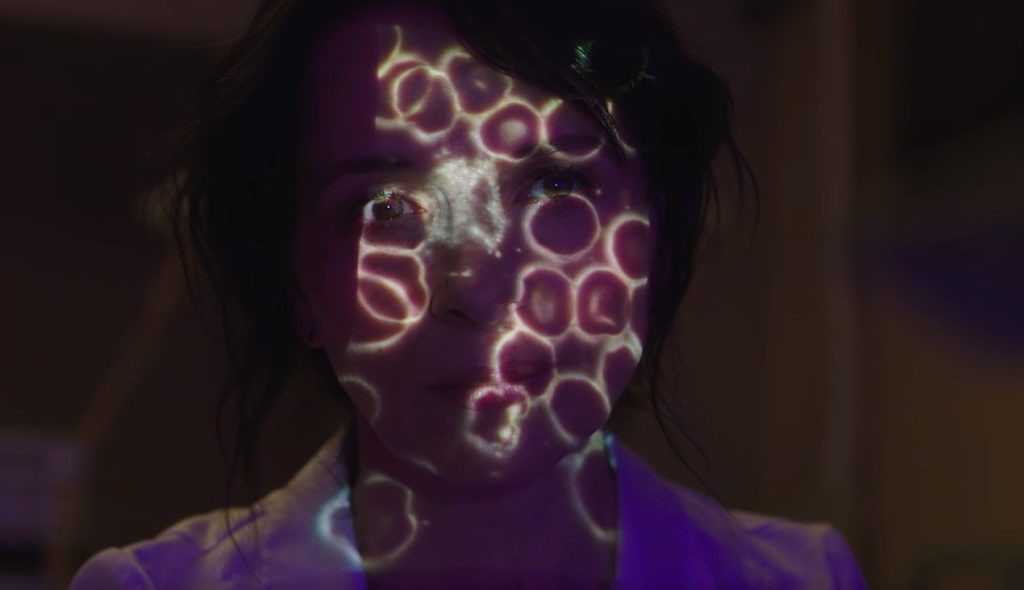
Dibs’s attention lies squarely in the realm of human reproduction, committing medical rape on the inmates in a challenging effort to conceive a child. The men are made to regularly produce samples in an orderly fashion; the women are subject to receiving them via rudimentary injection. All “patients” are kept in a medicated fugue state, which the filmmaking itself reflects. High, indeed.
That these brash experiments are successful at least once is a foregone conclusion, evidenced by the young daughter of inmate Monte (Robert Pattinson), an incessantly crying newborn during High Life’s opening minutes. This sequence is soon revealed to be a flash-forward, a glimpse into the future of this mauvais voyages.
Pattinson as Monte (ostensibly the main character) is a mournful and tragic vacant lot of a man, a man trapped exactly where no such lot could be laid: outer space. If he says little (he does), his eyes speak multitudes. His earthly crime cost him his freedom; the system parlayed that into what must be a death sentence: The “opportunity” to venture into the cosmos, to the edge of the nearest black hole, in the name of science. If things go well, a new energy source will be aided along and the dying Earth could be saved. They could be heroes. If things don’t go well… No point in coming home. (Incidentally, the space-faring time-bending that was explained ad nausium in Christopher Nolan’s Interstellar is in play here as well. André Benjamin, playing another inmate crew member, casually mentions that everyone they knew on Earth is probably old or even dead. #Science.) (Naturally, the whole of this film was locked prior to Katie Bouman’s confirmation of black holes as cosmic Krispy Kremes. The black hole is this film is a whirling whirlpool of space tar).
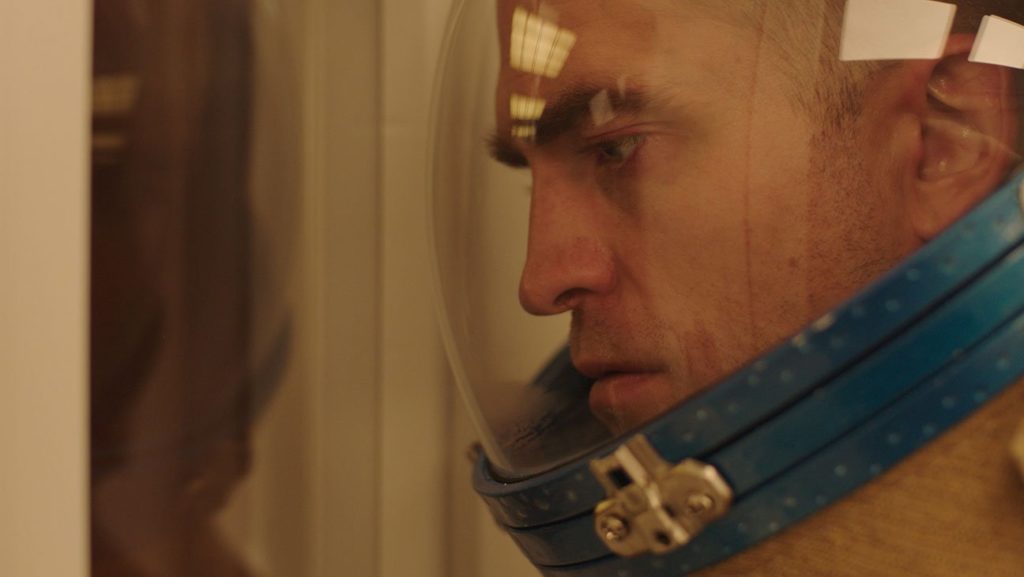
Monte, in the opening moments, is a man alone. The wailing, diaper-free baby in the makeshift playpen is more of an instrument of ear-piercing, sleep-depriving torture than a human companion. (In other words, she’s a baby). It’s fallen on Monte to fix the ship if they’re going to survive and actually follow through with the mission. Because, all his shipmates are dead. Either dead or on the brink of death. In any case, he makes the decision to chuck their bodies into the void, freeing up valuable onboard resources. And their freedom tastes of reality. Fade in the opening title graphic.
Only following this uneasy introduction to whole of High Life do we flashback to what is the majority of it, the Dr. Dibs-controlled era of trip. Part claustrophobic horror, part speculative science fiction, part intellectual mood piece, Denis’ vessel-bound film wears its art-house nihilism and grunginess with uncompromising pride. High Life, filmed in English as opposed to the director’s native French, is unlike anything Denis’s ever created before. Thematically, though, it’s in step with her well-established terse cinema of exploratory brokenness. It’s one of those projects that supposedly, she’s been unrealistically hoping to make for quite some time. The film is an undeniably resonant experience, no doubt one of the year’s most rightly ponderous. But, anchored by sure-handed unpleasantness and performers committing their all, High Life might just reach that highest high for a particular kind of adventurous moviegoer. But of course, nothing’s that simple…
